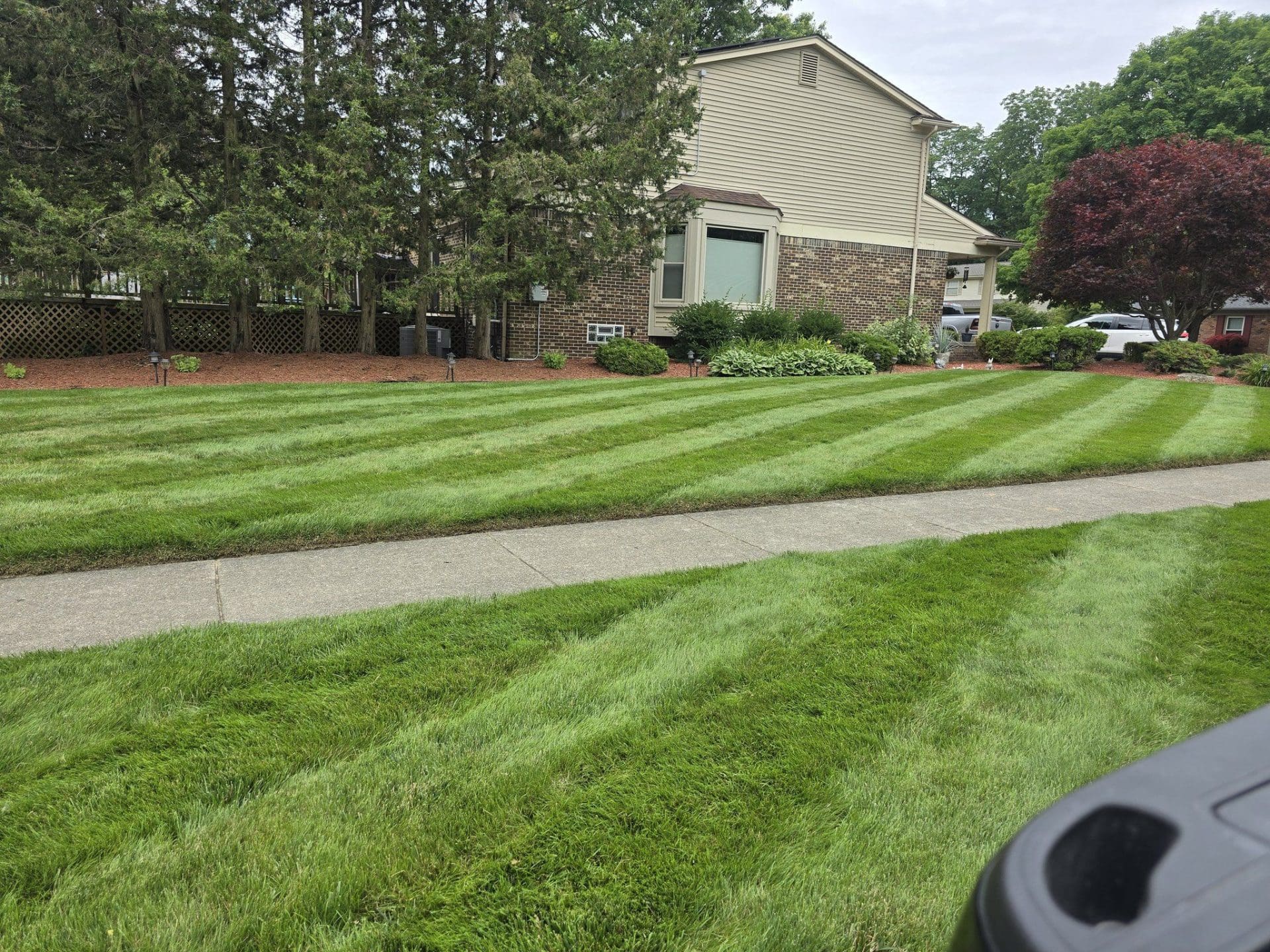
Winter may seem like the off-season for lawn care, but the actions you take during this time can have a significant impact on your lawn’s health come spring. From snow mold prevention to avoiding salt damage, understanding the do's and don'ts of winter lawn care is essential for maintaining a lush, healthy yard in cold climates like Michigan.
Do: Keep Your Lawn Clear of Debris
One of the most important steps you can take to protect your lawn in winter is ensuring it stays free of debris.
Why It Matters
Debris such as fallen branches, leftover leaves, or forgotten tools can create patches where moisture becomes trapped, leading to snow mold and other fungal diseases. Snow mold thrives under wet, compacted snow and debris, creating unsightly, unhealthy patches in your lawn when the snow melts.
Tips for Keeping It Clean:
- Rake before the first snowfall: Remove all debris in late fall to give your lawn a fresh start before it goes dormant.
- Check periodically: After heavy winds or storms, check for fallen branches or other debris.
- Remove excess thatch: While a thin layer of thatch can provide insulation, thick thatch can trap moisture and encourage mold growth.
By staying proactive, you can reduce the risk of fungal infections and make spring cleanup much easier.
Do: Monitor Snow Coverage to Avoid Mold Issues
Snow can act as a natural insulator for your lawn, protecting the soil and grass roots from harsh temperature swings. However, excessive snow coverage—especially when combined with compacted layers or prolonged wet conditions—can lead to snow mold, a common winter lawn disease.
Snow mold thrives when:
- Snow lingers on the lawn for long periods.
- The grass underneath remains damp and matted.
- Fall prep, like proper mowing and debris removal, has been neglected.
Prevention Tips:
- Mow to the correct height: Before winter, keep your lawn slightly shorter—about 2 to 2.5 inches. This reduces the risk of matting and improves airflow around the grass blades.
- Avoid heavy traffic: Stepping on snow-covered lawns can compact the snow and the soil below, encouraging mold growth and damaging the grass.
- Clear large piles of snow: If snow from plowing or shoveling creates drifts on the lawn, redistribute it to minimize overly thick layers.
Keep an eye on weather patterns and take simple steps to manage snow accumulation when needed. This can ensure your lawn stays healthier and better prepared for spring growth.

Don’t: Overuse Ice Melt and Salt Near Grass
Deicing products like salt and ice melt are winter essentials for Michigan homeowners, but they can spell trouble for your lawn. Overapplication or poor placement of these materials can damage grass and soil, leading to bare patches and weakened growth in the spring.
The Risks of Salt Damage
Salt draws moisture out of grass and soil, effectively dehydrating your lawn. This can lead to:
- Yellowing or browning of grass along walkways and driveways.
- A crusty residue on the soil surface that inhibits healthy growth.
- Soil compaction, making it harder for water and nutrients to penetrate.
Tips to Protect Your Lawn
- Use a pet-safe or lawn-safe deicer, which typically contains less harmful ingredients like calcium magnesium acetate.
- Shovel snow away from lawn edges to reduce salt runoff.
- Apply deicers sparingly and focus on high-traffic areas like sidewalks and driveways.
When spring arrives, flushing affected areas with water and adding gypsum to the soil can help mitigate any damage caused by salt over the winter.
Don’t: Ignore Soil and Grass Health Until Spring
It’s tempting to consider winter a time to forget about your lawn altogether, but neglecting its health during the colder months can lead to long-term issues. Michigan’s winter conditions, while harsh, set the stage for how well your lawn will recover and thrive once temperatures rise.
The Problem With Neglect
During winter, lawns are dormant, but the soil remains active beneath the frost line. Ignoring soil health can result in:
- Compacted soil, which restricts root growth.
- A buildup of thatch and debris, harboring pests or diseases.
- Increased vulnerability to weeds and poor grass coverage in spring.
Proactive Steps for Soil and Lawn Health
- Avoid heavy equipment or vehicles on the lawn. This prevents unnecessary soil compaction.
- Apply a light layer of mulch. For exposed areas, mulch can protect roots and prevent soil erosion.
- Check drainage patterns. Water pooling or improper runoff can worsen soil conditions during freeze-thaw cycles.
By staying mindful of your soil and lawn health, even in winter, you can save yourself a significant amount of repair work when warmer weather returns.
Prepare for a Healthy Spring Lawn
Winter may seem like a quiet time for your lawn, but it’s a season that requires thoughtful care to set the stage for vibrant growth in spring. By following the do's—such as keeping your lawn clear of debris, monitoring snow coverage, and protecting soil health—you can minimize damage and encourage stronger, greener grass when the weather warms. At the same time, avoiding key don’ts, like overusing salt or ignoring your lawn’s winter needs, ensures that your efforts won’t be undone by preventable mistakes.
When spring arrives, your lawn will thank you with fewer weeds, healthier roots, and a lush appearance that stands out in the neighborhood. If you’re unsure how to best care for your lawn during winter or need help planning for spring, consider reaching out to a professional.
For expert advice and year-round lawn care services in Livonia, MI, and surrounding areas, contact Independent Lawn Service at (734) 600-9161. We’re here to help your lawn thrive, no matter the season!

